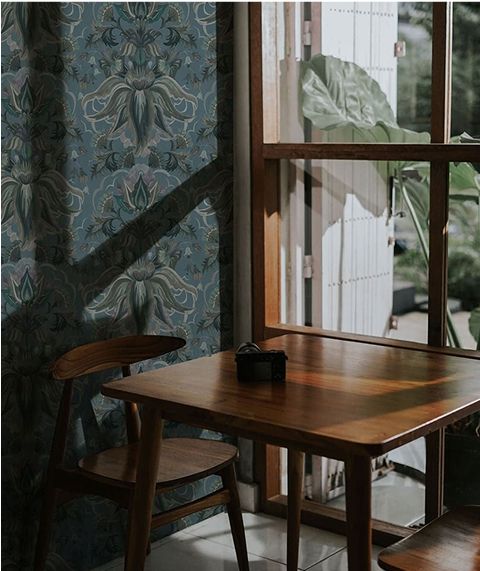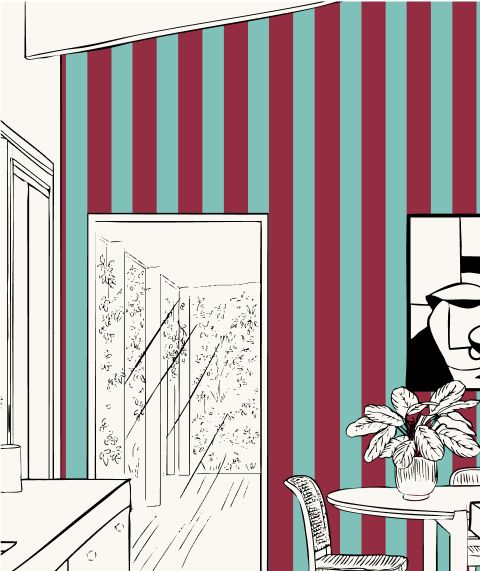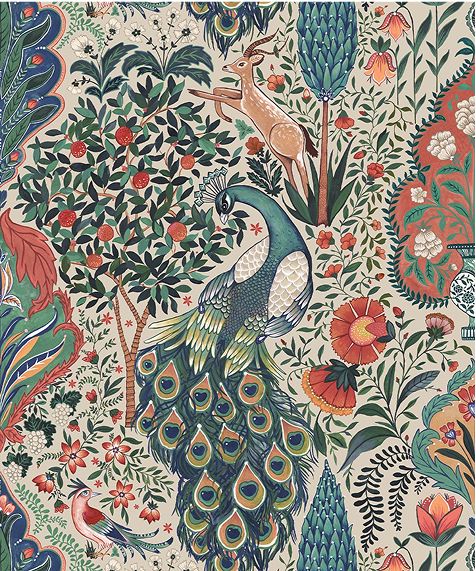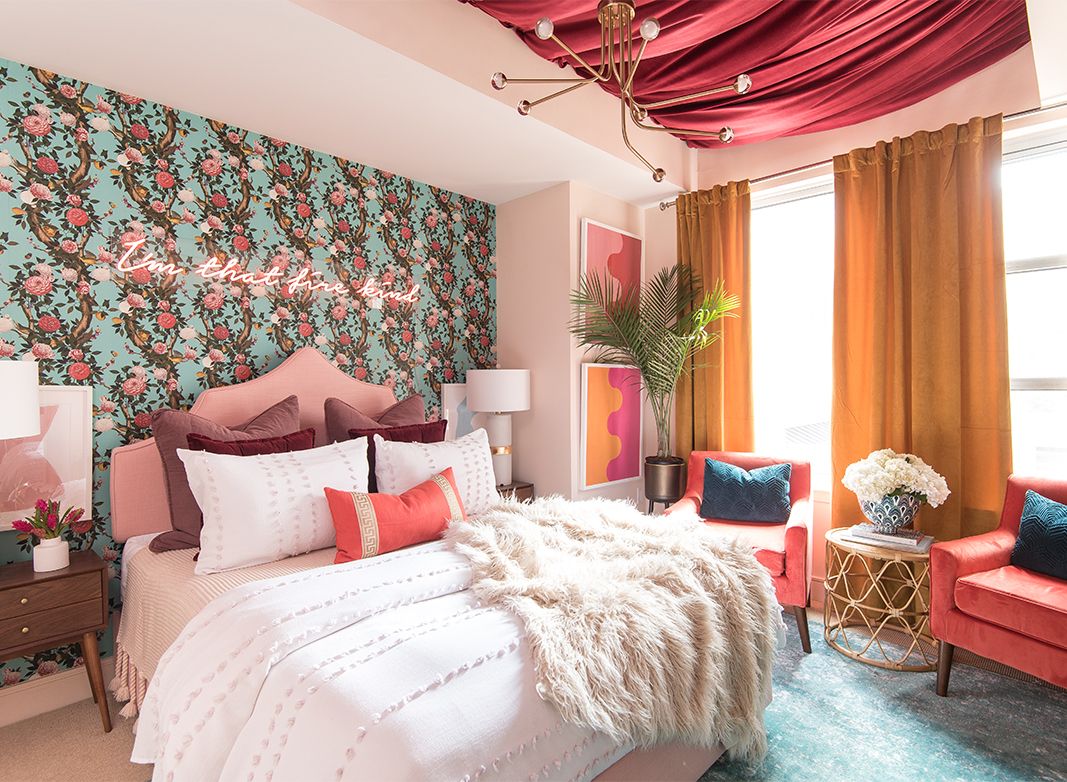Traditional Non-Woven Wallpaper
First let’s define the terms. When we say traditional, we’re not talking about your grandmother’s wallpaper. We mean the type of non-woven wallpaper that is not self-adhesive. Traditional wallpaper typically needs an adhesive that you must soak or paste onto the wall before you apply the paper. What is this non-woven stuff we’re talking about? Well, many years ago, the public was demanding a solution to vinyl wallpaper because, while it was durable, it was very difficult to remove, it would expand and contract and it would stain making it very difficult to clean. The wallpaper industry answered.
Non-woven refers to the backing of the wallpaper which contains a combination of natural and synthetic fibers. This makes the wallpaper more breathable, which reduces the risk of mold. It also reduces the amount that the wallpaper will expand or contract to almost nil. The non-woven backing also allows for it to be cleaned with a damp cloth. Finally, the biggest issue, it allowed it to be removed without the headache that previous wallpapers were known for. Check out this GIF of Bryce, our Creative Director, removing some traditional wallpaper from a wall in our office. Notice that he is using no tools or solutions.
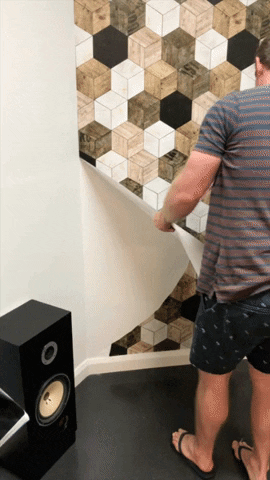
Why Aren’t Traditional Wallpapers Called Removable?
So if it’s easy to remove, why aren’t traditional wallpapers called removable? That’s a good question. It’s largely a matter of both intention and reputation. While traditional non-woven wallpaper can be removed, often pretty easily in one piece, it’s not created with the intention of being removed. It’s made to withstand high-traffic areas as well as indoor elements of heat and cold. As long as you want the wallpaper to stay up, it will stay up. For information on how to remove paste-the-wall wallpaper, check out our blog which has very helpful tips.
However, though newer non-woven products can be removed quite easily, the reputation of traditional wallpaper removal is a dark mark it still carries. Hopefully, that reputation will soon change. Once removed, however, it can’t be reused as the paper would likely sustain some damage during removal. So when it comes off the wall, it goes in the trash. This brings us to another positive aspect of traditional paper. Traditional non-woven wallpaper was made to be much more environmentally friendly than old vinyl wallpaper which required chemicals that polluted the air. No chemicals are required for the creation of traditional non-woven wallpaper.
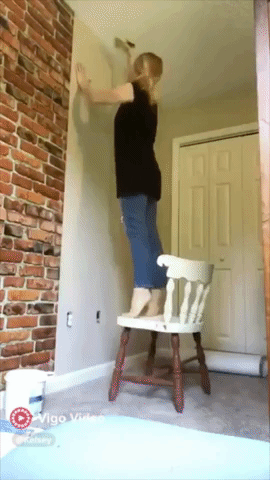
Removable Wallpaper
As was helpful before, defining the terms is important. What is often termed removable is also synonymous with reusable and self-adhesive, otherwise known as peel-and-stick. Because traditional wallpaper was seen as such a permanent option, the industry created an alternative. Applying requires no soaking or pasting. The adhesive is already on the back just like any decal. All you have to do is peel off the backing. Want to remove it? Just peel it off the wall with ease. Your work is done. No extra cleaning of excess paste or scraping of paper that didn’t quite rip off. The term renters wallpaper is also used because its target market seems to be those in temporary living situations. But how well does it work? Keep reading.
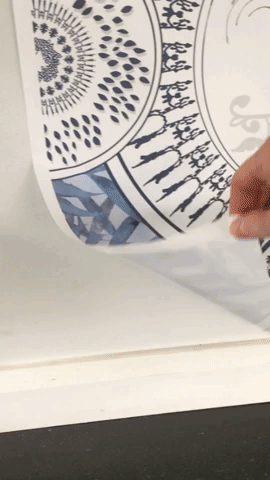
Installation: traditional wallpaper vs. removable wallpaper
Since we have established that both papers in our modern age have removable qualities, one area where there is a lot daylight is in their installation. As we mentioned before, traditional wallpaper will require paste and a roller brush to apply the paste to the wall. Removable wallpaper won’t require any of those tools which results in a less messy experience. Both types of wallpaper will require you to cut the paper to fit your wall, use a level to draw a plumb line so your wallpaper is straight, and a pencil for marking.
But I think the most important distinction and where traditional non-woven wallpaper clearly wins is when you apply the paper to the wall. With traditional wallpaper, because there is a paste on the wall, you are able to move the wallpaper after you apply it and manipulate the paper to get it straight or to get it right up against the edge. Essentially, traditional allows you to not be perfect with your application because you have a window of time to adjust the paper before the paste dries. This also makes it much easier to smooth out the wrinkles. Check out this video of Oh So Kel’s installation of Huddy’s Dots. The paper is being pushed to allow the two panels to meet seamlessly.
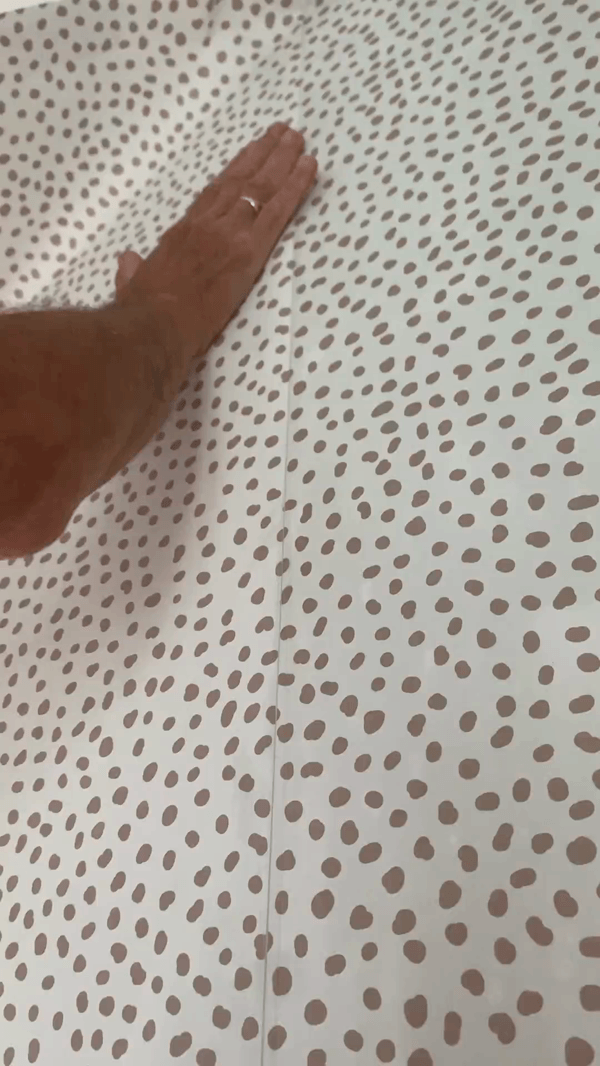
With removable peel and stick wallpaper, since the back is sticky, you can’t push the paper up or down after you apply it. If you aren’t straight or if there are wrinkles, you need to peel it off and try again. So in that sense, installing removable wallpaper is much harder. And after you install it, there seems to often be issues with bubbling. Check out Camilla’s installation of the Sarah Annie design. While the wallpaper looks beautiful, you can see where the paper is starting to bubble.
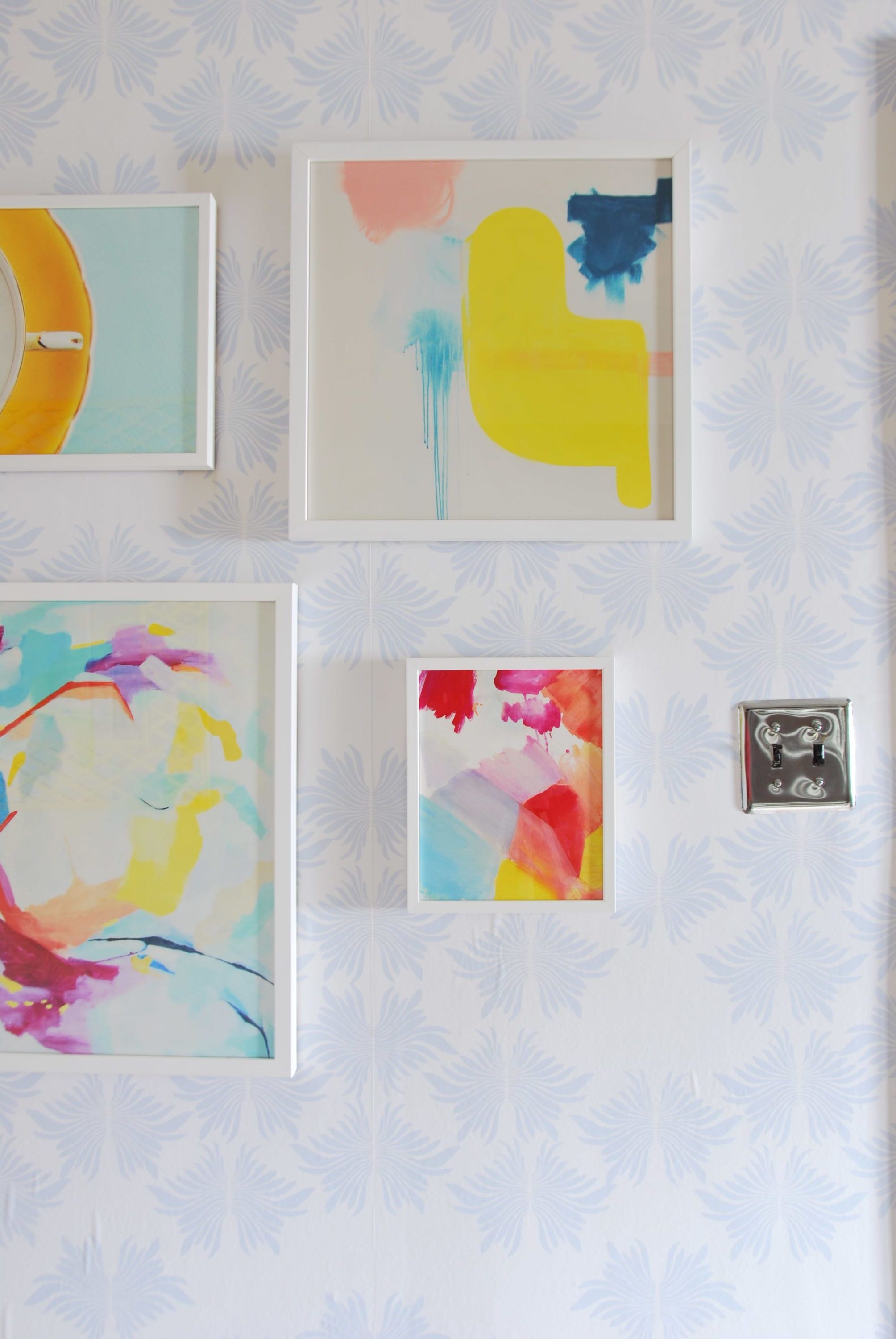
Durability
Removable wallpaper is not nearly as durable as traditional non-woven wallpaper. The peel & stick paper can peel, seemingly on its own and you will have to stick it back on the wall. The adhesion is nowhere near as strong as paste. It is more susceptible to heat, cold and humidity, which makes it unworkable for humid bathrooms or hot laundry rooms. It may be a common issue that you’ll walk into a room and find the corner of your removable wallpaper hanging down or the entire panel on the floor. Its adhesive quality is affected by everything from the paint on your wall to direct sunlight, which makes its performance different for every environment. Traditional non-woven wallpaper just works, every time.
This inconsistency has caused us to give removable wallpaper a big thumbs down. And less than a year into our experience with removable wallpaper, we removed it from our website. If it can’t stay on your wall, what is the point?
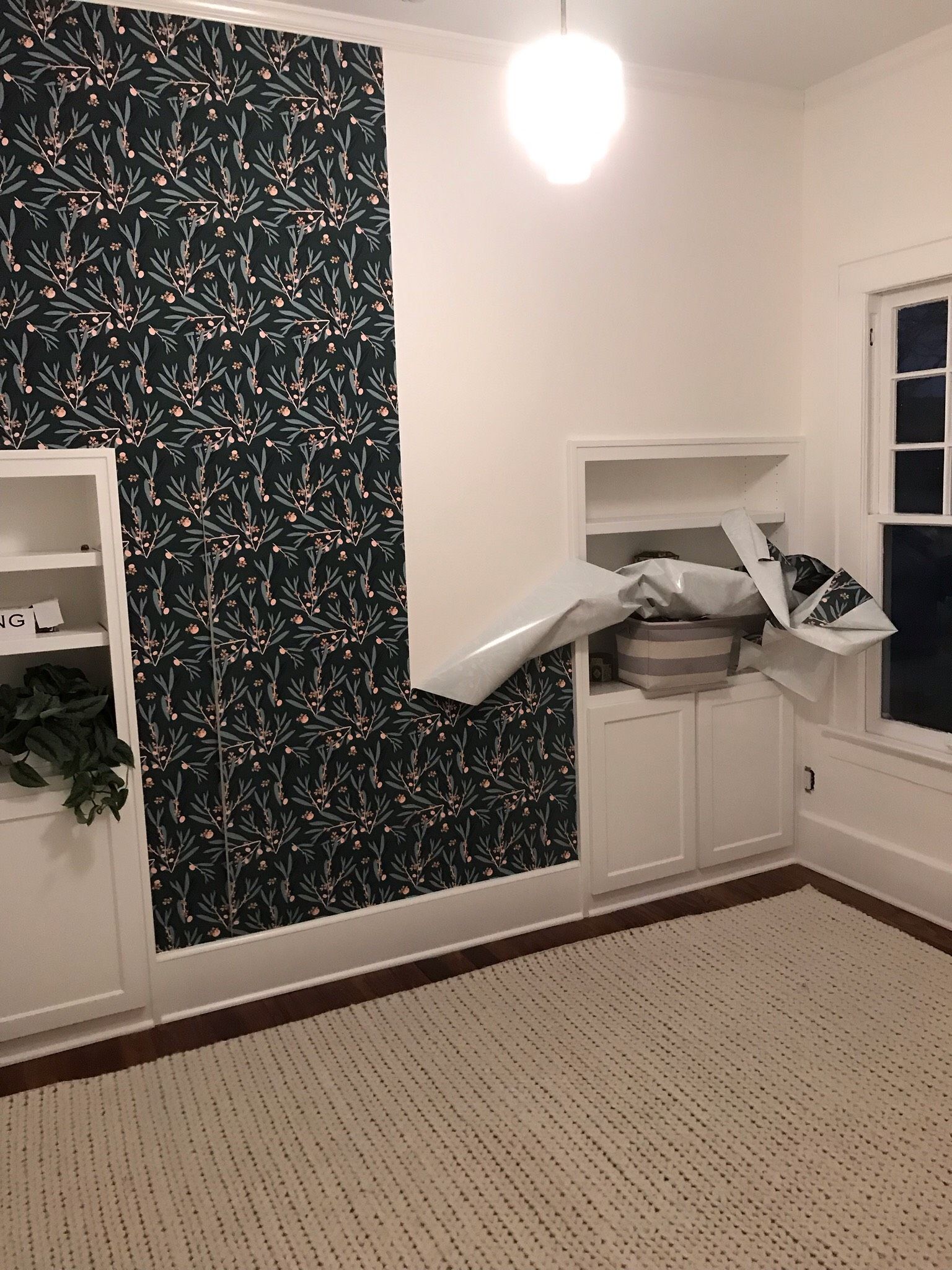
Deciding which wallpaper is best comes down to a personal choice. If you have temporary tastes or a temporary living situation, removable may be something to consider. However, if you’re going to be staying put for more than a year and you want a quality product that you can count on, traditional non-woven wallpaper is the way to go. Unfortunately, the technology for removable wallpaper isn’t quite there yet. It seems this type of wallpaper has some work to do before it is accepted as a legitimate and reliable wall-covering. At this point, removable wallpaper is not a product we can endorse. Traditional Non-Woven Wallpaper is the clear winner.
